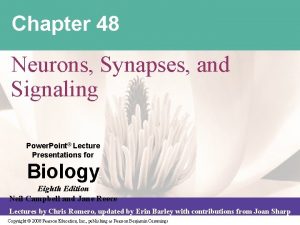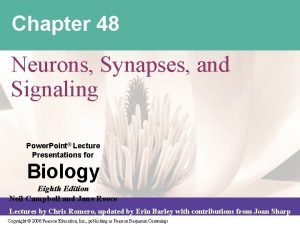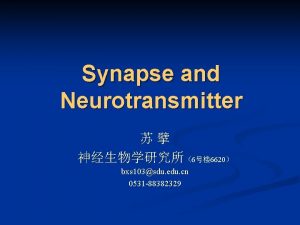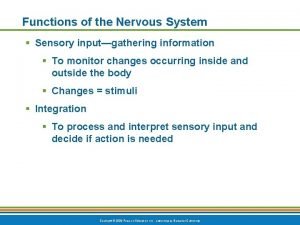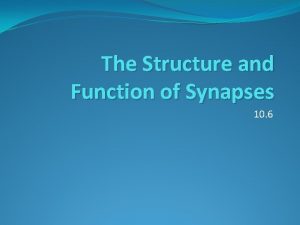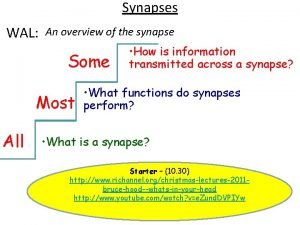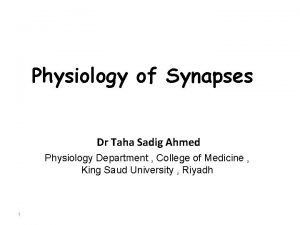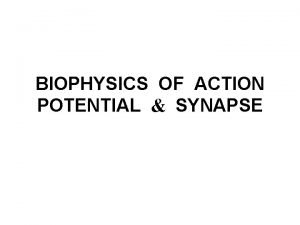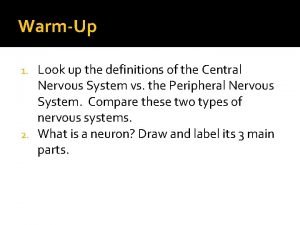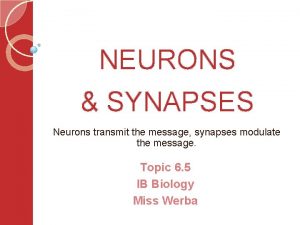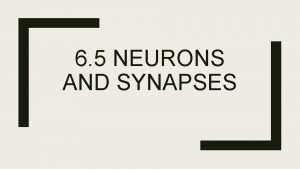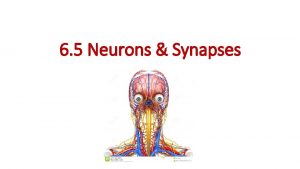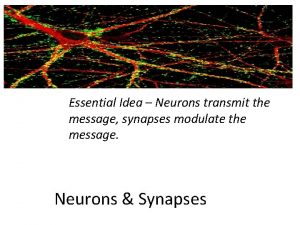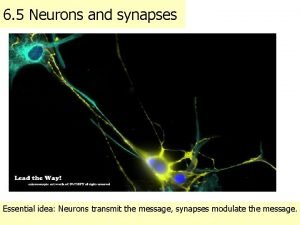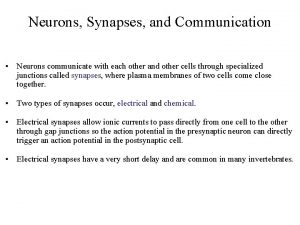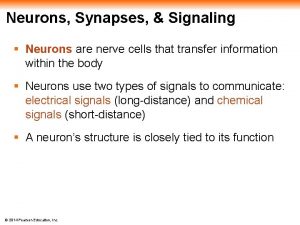6 5 Neurons and Synapses Understanding Neurons transmit










- Slides: 10


6. 5 Neurons and Synapses Understanding: - Neurons transmit electrical impulses - The myelination of nerve fibers allows for salutatory conduction - Neurons pump sodium and potassium ions across their membranes to generate a resting potential - An action potential consists of depolarisation and repolarisation of the neurons - Propagation of nerve impulses is the result of local crrents that cause each successive part of the axon to reach the threshold potential - Synapses are junctions between neurons and receptor on effector cells - When pre-synaptic neurons are depolarised they release a neurotransmitter into the synapse - A nerve impulse is only initiated if the threshold potential is reached Applications: - Secretion and reabsorption of acetylcholine by neurons at synapses - Blocking of synaptic transmission at cholinergic synapses in insects by binding of neonicotinoid pesticides to acetylcholine receptors Nature of science: - Cooperation and collaboration between groups of scientists: biologists are contributing to research into memory and learning. Skills: - Analysis of oscilloscope traces showing resting potentials and action potentials.

Resting Potential in a Neuron • State the resting potential of a neuron • Explain how pumps and channels in the cell membrane sets up a potential difference



Squid axon

K+ -70 m. V

Na+ channel is closed An electrical gradient pulls K+ back into the axon will diffuse out of the axon making the outside positive and the inside negative This creates concentration gradients for Na+ and K+ K+ K+ Na+/K+ pumps 3 x Na+ out and 2 x K+ in to the axon 2 x K+ K+ channel 3 x Na+ The chemical and electrical gradients will balance at -70 m. V K+ channel -70 m. V

Na+/K+ pumps 3 x Na+ out and 2 x K+ in to the axon K+ will diffuse out of the axon making the outside positive and the inside negative 3 x Na+ K+ 2 x K+ K+ channel This creates concentration gradients for Na+ and K+ The chemical and electrical gradients will balance at -70 m. V K+ channel Na+ channel is closed An electrical gradient pulls K+ back into the axon -70 m. V

Why don’t sodium ions diffuse in and out? Sodium channels are voltage dependent (we will look at these when we talk about action potentials) VOLTAGE DEPENDEDNT – they only open at certain voltages
